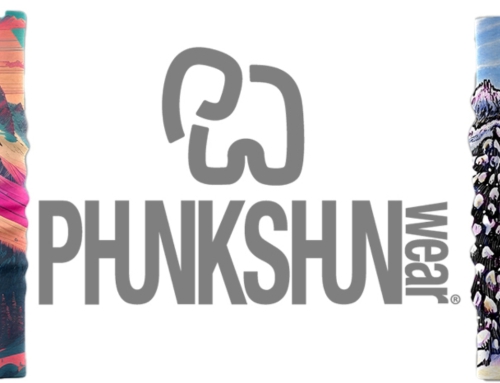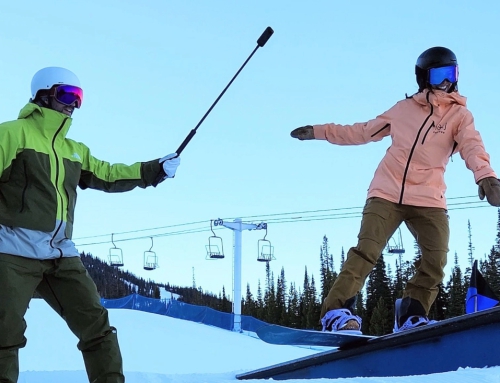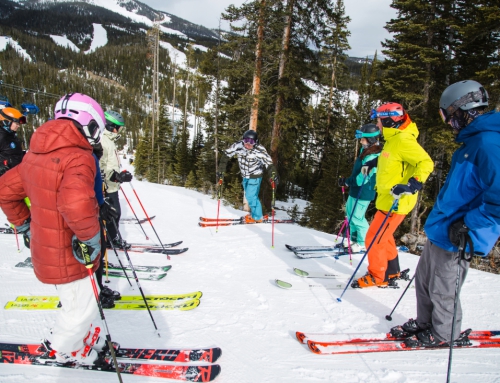W.I.S.E. Registration Closes Sunday + First Look at New 32 Degrees Story
Registration for the W.I.S.E., Women Invited Supported Elevated, mentorship series at Mammoth Mountain, California, on Dec. 6 and 7, closes Sunday, Dec. 3 at 12 a.m. MT.
Register now to enjoy two full days of shredding and progression on snow, while focusing on personal and professional growth, goal setting, and community. There will also be opportunities to connect with mentors, mentees, and trainers from across PSIA-AASI. On-snow sessions will have discipline-specific clinics, as well as opportunities to shred with women from other snowsports backgrounds.
This event is open to all levels and will include snowboard and alpine.
Registration:
– Cost: $150.00
– CEUs: 12
32 Degrees: How Biomechanics Can Influence Female Riders
(This story by AASI Snowboard Team member Stephanie Wilkerson appears in the Winter 2024 issue of 32 Degrees. Look for the magazine soon in your mailbox.)
Everyone’s body is a unique shape and size. Everyone moves slightly differently as well. It’s our job as instructors to figure out how an individual’s body moves so we can help them reach their snowsports goals more efficiently.
This is especially true when teaching female snowboarders because biomechanics specific to the female body can impact how they stand on the board, ranges of motion, and the movements they make to influence board performances of tilt, twist, pivot, and pressure. This article explores some of the most common biomechanics specific to women. These are generalizations and not applicable to every female rider, but being more informed can give snowboard instructors more insight into how to help women get the most out of their riding.
THE Q ANGLE
The angle formed between the quadriceps muscles and the patella tendon, the Q angle (also known as the quadriceps angle) is one of the first things someone might think about when talking about the biomechanical differences between males and females. The Q angle in males is typically between 8˚and 14˚, whereas it ranges from 11° to 20° in females.
How This Relates to Snowboarding: The wider Q angle in women can result in more force being exerted on the ligaments and tendons in the knee, causing a greater risk for knee injury. The Q angle may also impact the stance width on a snowboard. A slightly wider stance or more open binding angles may help to better align the knee and the femur, allowing more efficient flexion on a snowboard for people with wider Q angles. Stances that are too wide, however, can cause problems with movement and alignment.
ANTERIOR PELVIC TILT (APT)
This term refers to forward rotation of the pelvis, which causes a slight curve in the lower spine. Males normally have around 4-7 degrees of APT, whereas, for females, it’s around 7-10 degrees. Of course, that number can vary, depending on the person and anyone can have APT to some degree.
Causes for this forward rotation can be tight hip flexors, tight muscles in the front of the thighs, and/or too much length in the hamstrings or glutes. Core strength can also impact the amount of APT.
How This Relates to Snowboarding: Like the Q angle, a higher degree of ATP can affect the way someone stands on their snowboard. It can make it difficult to line up the hips under the spine for a nice, stacked snowboard position. In less experienced riders, it can make it more challenging to move the center of mass across the board to the toe side. It can also make it difficult to fully extend in a stacked position on the heel side.
When someone with too much ATP snowboards, it can look like they’re bending at the waist and pushing the chest downward. A good fix for this is to relax the knees and ankles a bit more and actively try to tilt the pelvis upward; the upper body will follow. It also helps to think about trying to tilt the tailbone forward and down toward the snowboard, allowing the hips and lower spine to be completely in line with each other.
ATP can also affect how a person might engage their core while snowboarding. It can be difficult to keep a strong core and upper body if the pelvis is out of line with the upper body, especially while in a more extended snowboard position. To keep the core engaged while riding, it helps to keep the knees slightly bent – even in an extended position. This gives a little more range of motion to keep the pelvis tilted forward.
Excessive anterior pelvic tilt can be corrected over time, by actively focusing on tilting the pelvis up instead of down. There are many exercises that can help strengthen the right muscles to decrease the tilt as well.
GAIT & HOW WE MOVE ON OUR FEET
The way people walk and balance can change the way they move and stand on a snowboard. Because of some physical differences between males and females, the gait is slightly different as well. Males tend to transfer their body weight from heel to toe across the center of the foot. Females tend to use more of the outside of the foot when walking and balancing.
How This Relates to Snowboarding: Balancing on more of the outer foot can mean that females will feel more in balance with a wider stance width, or more open binding angles. It could also mean that the way females move their center of mass around on the board might look different from males. Females might move the knees more outward when moving across the width of the snowboard from heel to toe. Males might prefer to move more directly across the board.
THE ANKLE, FOOT, AND LOWER LEG
There are many differences between ankles in males and females. Females have a greater range of motion when it comes to the ankle joint. Males tend to have longer and broader feet. Females have longer calf muscles, shorter tibial length, higher arches, a shorter big-toe height, and a more curved inner arc to the foot.
How This Relates to Snowboarding: Washington-based snowboarder Jordan Sell recently surveyed women and non-binary individuals about snowboard boots and found that 54.4% experience heel lift, calf pain, and numb toes in their boots. The effect this has on overall snowboarding performance can be significant. More specifically, the lack of ankle lock in most snowboard boots can negatively impact the rider’s ability and response when turning onto toe side. This is why it’s so important to make sure boots fit properly. Chances are, more than half of your female students have boots that do not fit properly.
Females’ extra range of motion in the ankle joints can be good and bad. If the boots don’t fit properly, female snowboarders may have a greater risk of ankle injury because their joints are more flexible. On the flip side, the more flexible ankle joint could result in a greater ability to butter the snowboard and tweak tricks more aggressively.
FLEXIBILITY
Generally speaking, females have greater overall flexibility and range of motion in their muscles, joints, tendons, and ligaments than males.
How This Relates to Snowboarding: More flexibility can be an advantage as well as a disadvantage. Again, it can increase chances of injury if someone is overly flexible. They may have to focus more on strengthening stabilizing muscles around their joints to help lessen this risk.
Conversely, with a solid snowboard foundation, flexibility can become a superpower. Added range of motion and flexibility can open the door for accomplishing some very fun maneuvers on a snowboard that less flexible individuals might find difficult to achieve.
CENTER OF MASS
The center of mass in males tends to be close to their upper stomach area. Females’ center of mass tends to be in the middle of the hips. This, of course, can vary slightly, depending on body type, height, and weight.
How This Relates to Snowboarding: A lower center of mass can be another secret superpower. This could mean that females tend to have better balance than males (although studies of gender-balance differences are inconclusive). It can mean that for males to reach the same amount of balance as females, they may have to flex more. So, when snowboarding, females might need to flex less to achieve a similar outcome on a snowboard. This could also mean that when females move their hips while snowboarding, they get a more direct board-performance outcome than males.
MUSCLE MASS & OVERALL STRENGTH
The average male tends to be 33% stronger than the average female when directly comparing individuals of similar stature. However, when comparing upper to lower body strength in males and females separately, males have almost equal body strength in upper and lower body, and females have most of their strength in their lower body.
In terms of muscle power output, one study states that: “Generally, male muscles… generate a higher maximum power output than female muscles”; however, “…female muscles have been found to be more fatigue-resistant and recover faster than male muscles.”
How This Relates to Snowboarding: If the majority of strength for females is in their lower body, that’s good news when it comes to snowboarding. This could mean that after female snowboarders have a solid foundation in snowboarding, their overall stamina and strength while riding could be higher than that of male snowboarders of a similar ability level and stature. However, male snowboarders might have a higher ability to make maneuvers that require maximum power output.
When learning something new, it may be more efficient to work on the sequence of movement for a longer time when working with students with less muscular power output, rather than taking a trial-and-error approach that tends to use more energy bursts with less-efficient movements. Instructors may wish to take the time to work on more specific movements and sequences at an elementary stage. That way, the movements flow more efficiently as the student works toward the mastery stage of learning.
TAKEAWAYS
Everyone’s bodies are different and, again, the biomechanical considerations presented here are generalizations. But, hopefully, they get us all thinking about all the different ways people of different sizes and shapes might move on a snowboard. The information I present here is a compilation of common differences that I’ve experienced while teaching, riding, and sharing information and stories with other female athletes throughout my instructing career.
I’m not suggesting you constantly compare and contrast every female snowboarder to their male counterparts. Instead, think about snowboarding as a sport unique to the individual participating in it. There are a lot of ways to reach the same outcome when it comes to body movements and snowboarding. Some specific body types and shapes could have advantages and disadvantages. It’s about discovering the advantages in all different body types and then figuring out how to best use them to do really fun things on a snowboard.
Stephanie Wilkerson is a member of the AASI Snowboard Team. Her home mountain is California’s Mammoth Mountain. She is also a women’s editor and snowboard gear tester for TheGoodRide.com.
REFERENCES
Carreiro, Jane E. “Q (Quadriceps) Angle.” In Pediatric Manual Medicine: An Osteopathic Approach. Churchill Livingstone: London. 2009
“Centre of Gravity.” Physio-pedia.com. Accessed October 20, 2023: http://tiny.cc/32DW24CentreOfGravity
Dalleck, Lance C. and Leslie E. Smith. “Battle of the Sexes: Should Training Guidelines for Men and Women Be the Same?” ProSource, American Council on Exercise. June 2016. Accessed October 20, 2023: http://tiny.cc/32DW24WomensBiomechanics
Erdmann, W.S. “Center of Mass of the Human Body Helps in Analysis of Balance and Movement.” MOJ Applied Bionics and Biomechanics. 2018; 2 (2). Accessed October 20, 2023: http://tiny.cc/32D24CoMBalance
Glenmark, Birgitta, Maria Nilsson, et al. “Difference in Skeletal Muscle Function in Males vs. Females: Role of Estrogen Receptor-Beta.” American Journal of Physiological Endocrinal Metabolism. December 2004. Accessed October 20, 2023: http://tiny.cc/32DW24MuscleFunction
Williams, Terry. “Muscular Strength in Women Compared to Men.” Livestrong.com. Accessed October 20, 2023: http://tiny.cc/32DW24MuscularStrength
Wunderlich, R.E., P.R. Cavanagh. “Gender Differences in Adult Foot Shape: Implications for Shoe Design.” Medicine and Science in Sports and Exercise. April 2001; 33 (4). Accessed October 20, 2023: http://tiny.cc/32DW24FootShape







